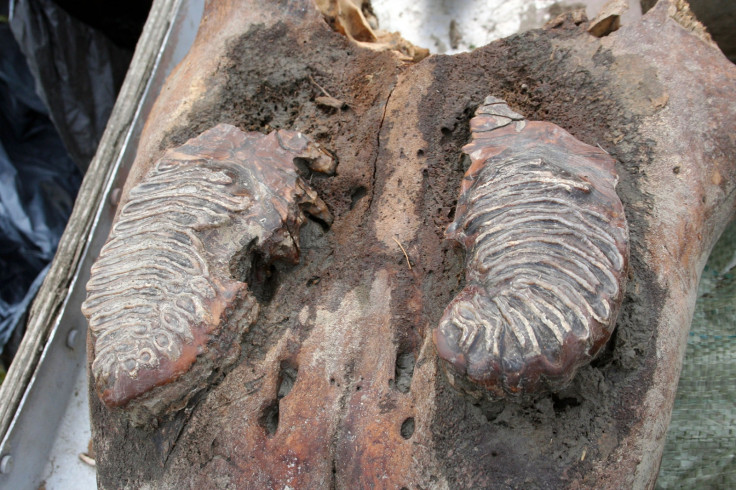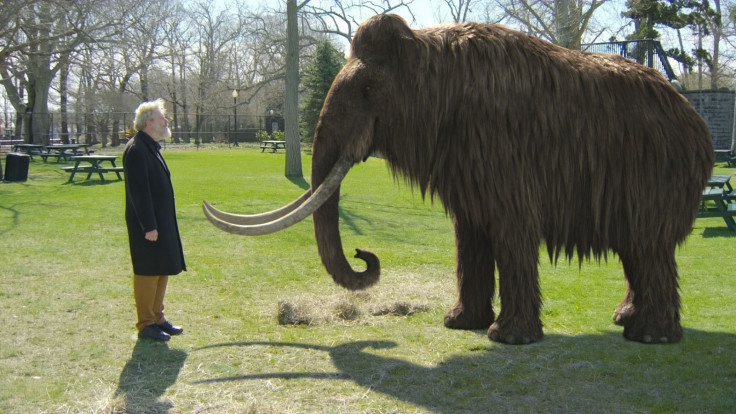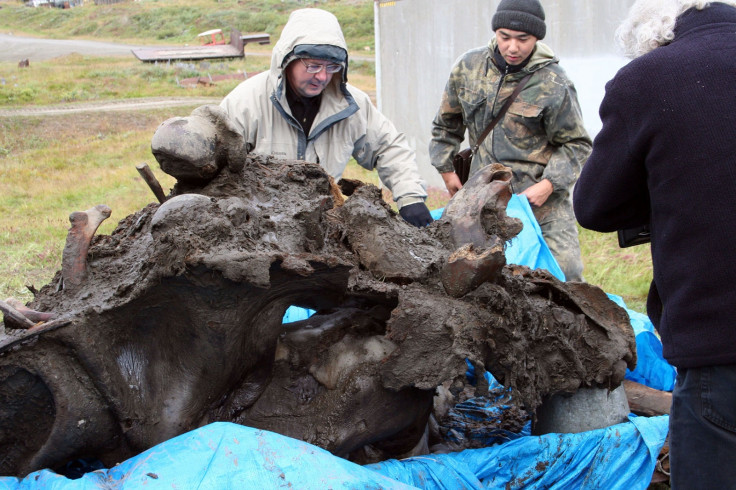Woolly Mammoth Cloning Debate Reignited by South Korean 'De-Extinction' Scientists
The debate over bringing the long-extinct woolly mammoth back to life has been reignited by South Korean and US scientists.
In May last year, scientists discovered the remains of a woolly mammoth in northern Siberia. It emerged the remains were the best preserved flesh ever unearthed, with three legs, most of the body and some of the head and trunk remaining intact.
The mammoth, named Buttercup, quickly made headlines for one main reason – the ability to use the remains to produce a clone. Not only were the remains extremely fresh, but when it was dug out of the permafrost, blood oozed from the body.

In a new Channel 4 documentary, Woolly Mammoth: The Autopsy, scientists perform an autopsy of the creature and analyse its tusks to discover more about its life.
Findings showed the adult female walked the Earth 40,000 years ago. She had given birth to eight live calves, and one that died, analysis of her tusks revealed – female woolly mammoths' tusks grow once they reach their calf-bearing years and the rates of growth depend on where they are in the calving cycle.

The mammoth's teeth show she was in her 50s when she died. Like elephants, mammoths have six sets of molars during their lifetime and when the last set wears out, they starve and die.
Buttercup was on her last set when she died, as she was unable to chew her food correctly. However, this was not what killed her. She died after getting stuck in a peat bog and getting eaten alive by predators from behind.
Palaeobiologist Tori Herridge, from London's Natural History Museum, said: "As a palaeontologist, you normally have to imagine the extinct animals you work on. So actually coming face-to-face with a mammoth in the flesh, and being up to my elbows in slippery, wet, and –frankly – rather smelly mammoth liver, counts as one of the most incredible experiences of my life. It's up there with my wedding day.

"The information gleaned from Buttercup's autopsy about her life and death, and the future discoveries that will come from analyses of her muscles and internal organs, will add to our understanding of these magnificent Ice Age beasts."
As well as details of the autopsy, the documentary will look at the current debate over bringing back the woolly mammoth. Currently, scientists in the US and South Korea are working to make this possible, but many people argue this is a step to far.

Herridge said she believes cloning Buttercup would be cruel. An elephant would have to be used as surrogate, which could well die in the process: "The most fundamental step and ethical concern with this kind of procedure is that you need to have an Asian elephant surrogate mum at some point.
"Cloning a mammoth will require you to experiment on probably many, many Asian elephants. I don't think they are worth it – the reasons just aren't there."

Geneticist Insung Hwang, from the South Korean biotech company Sooam, is working on the project. He said several different institutions are already working on the blood samples to try to find an intact genome to clone.
"We're trying hard to make this possible within our generation ... [but] there are inherent ethical questions we have to address", he said. "That's why we have to start discussing the implications now."
Woolly Mammoth: The Autopsy is on Channel 4 at 8pm on 23 November. It will also be shown at 8pm on the Smithsonian Channel in the US on 29 November.
© Copyright IBTimes 2025. All rights reserved.






















